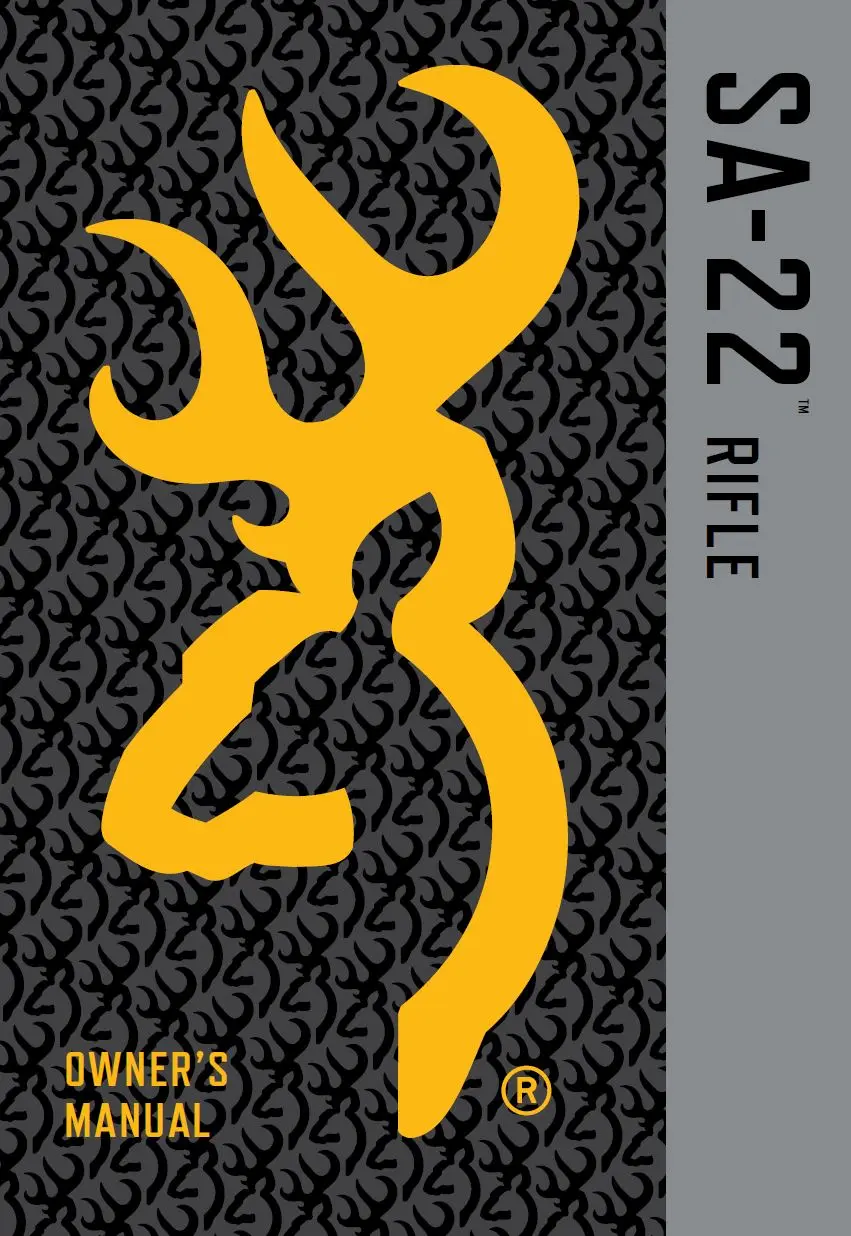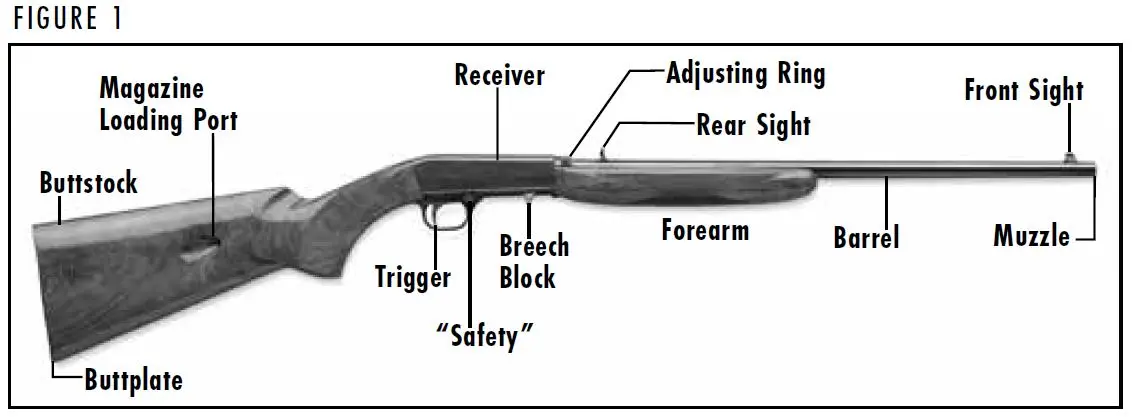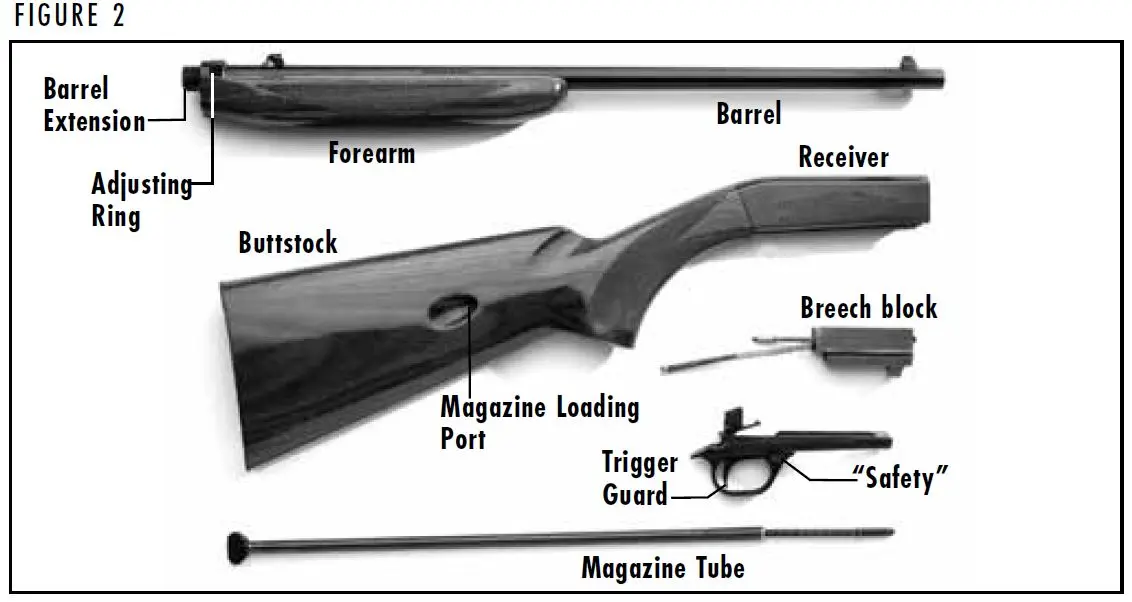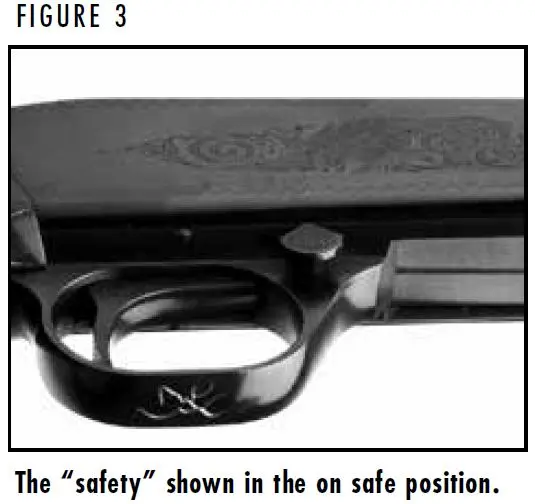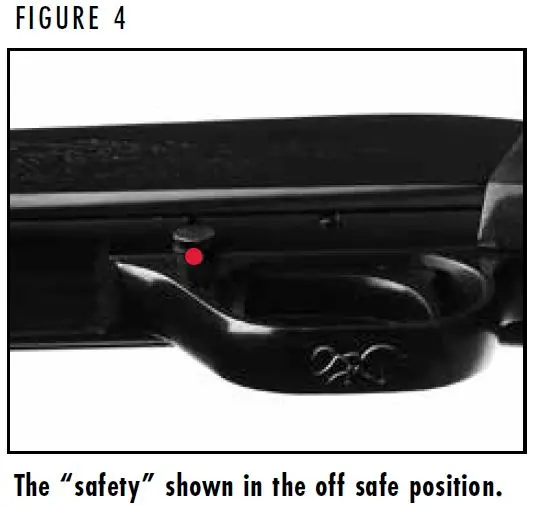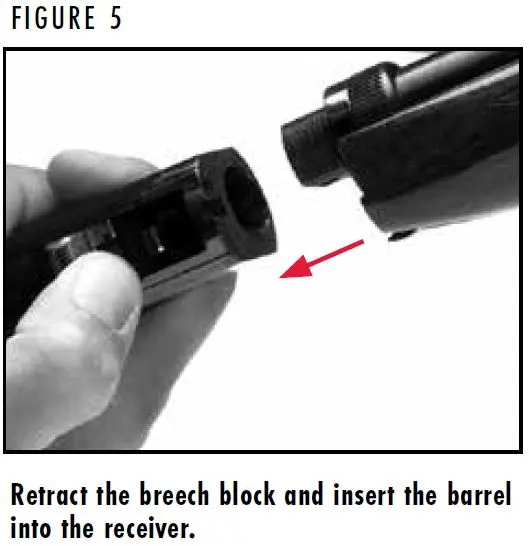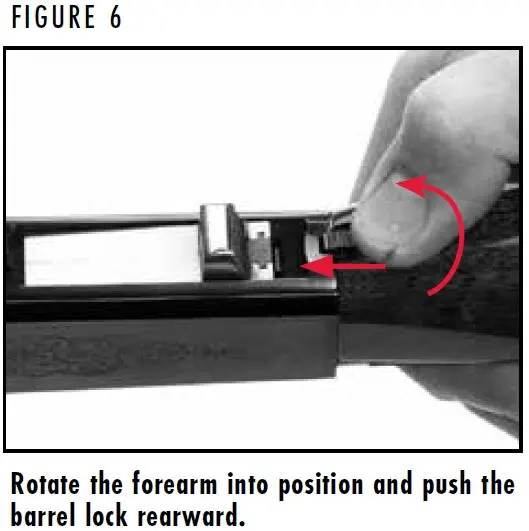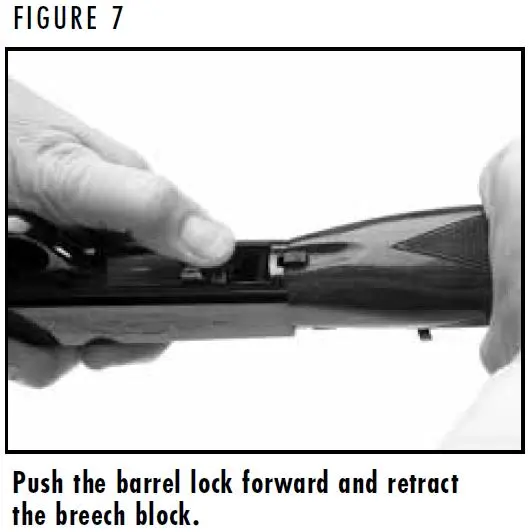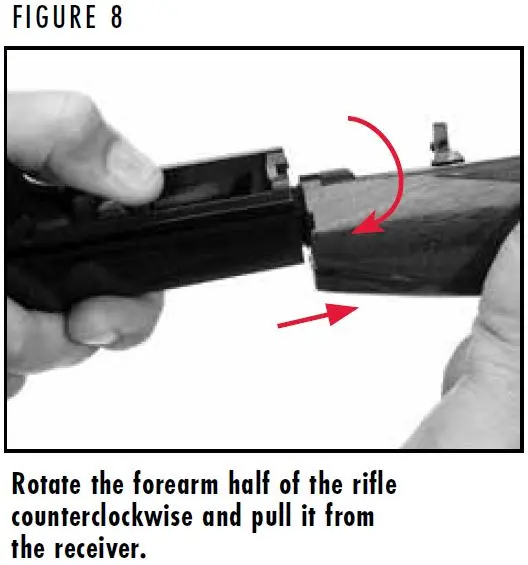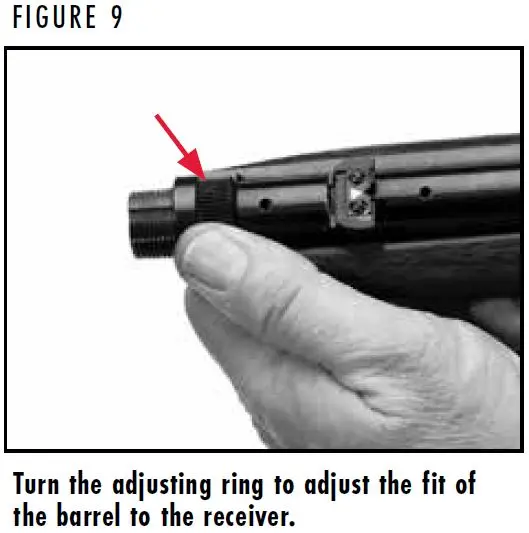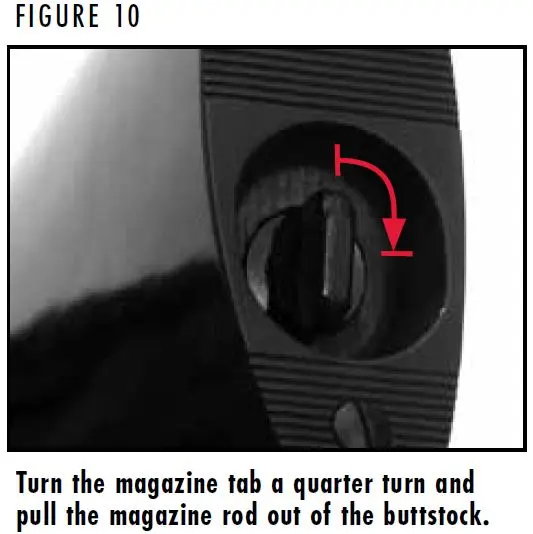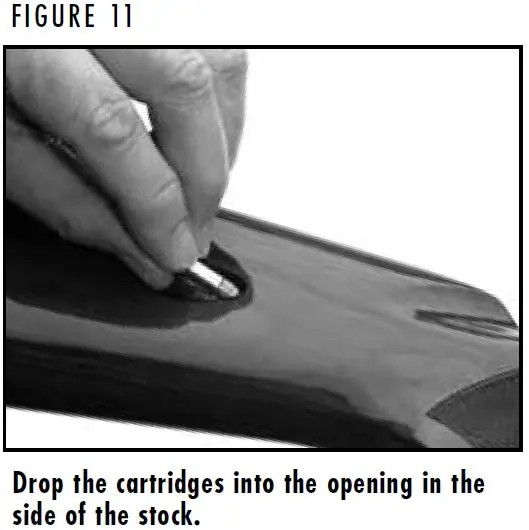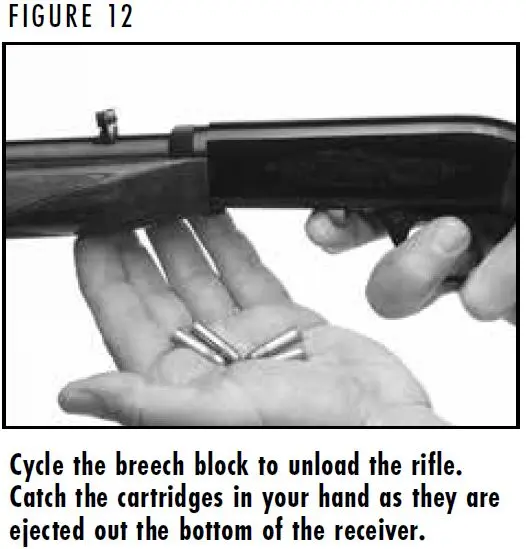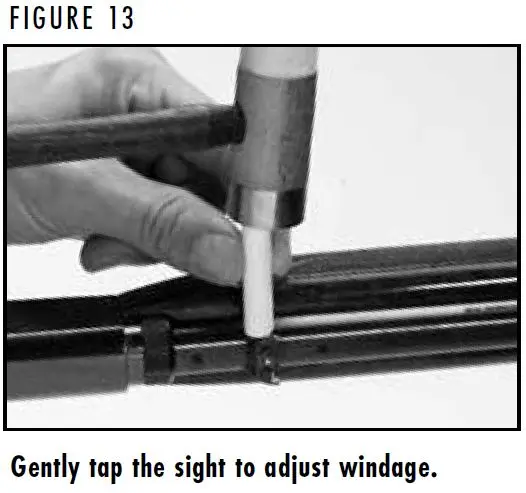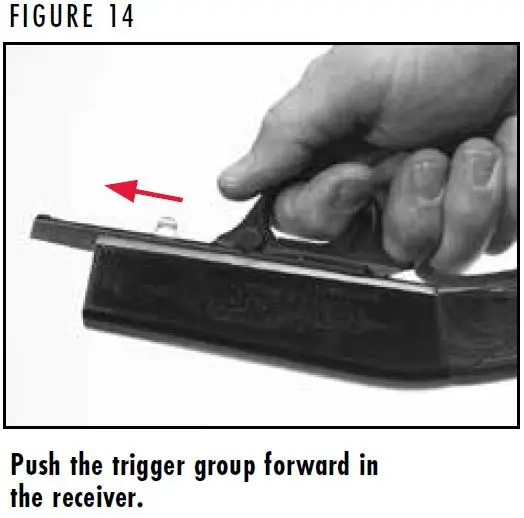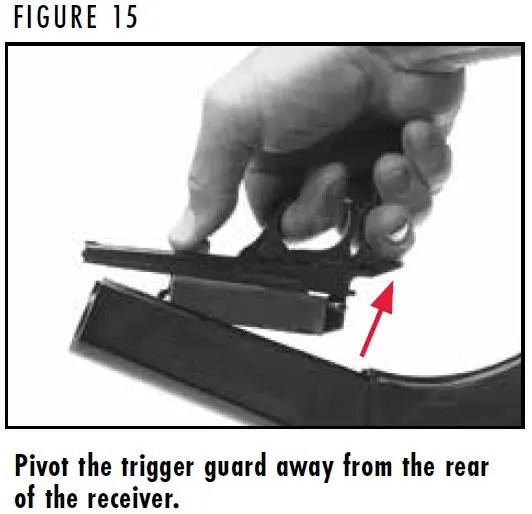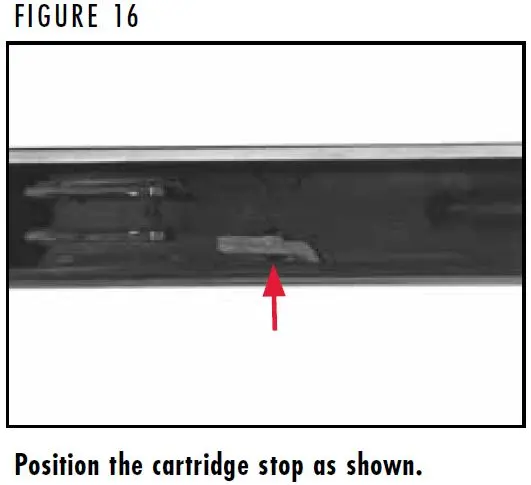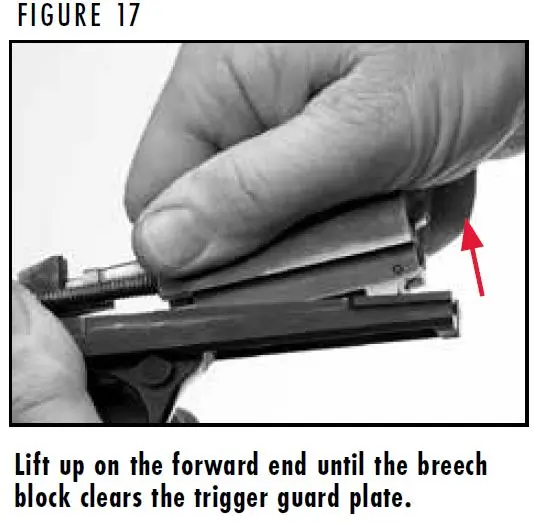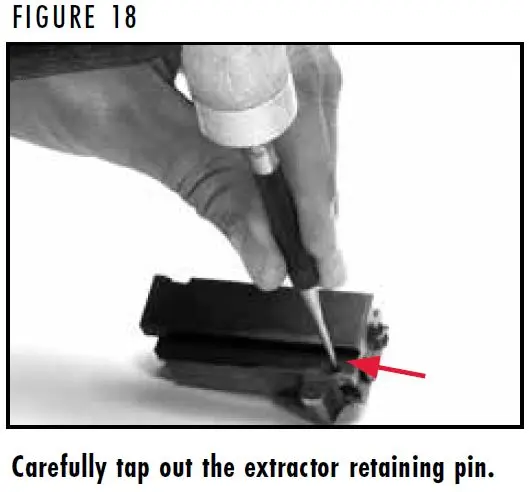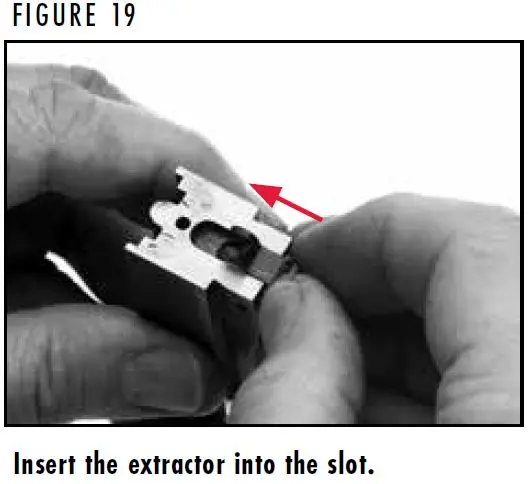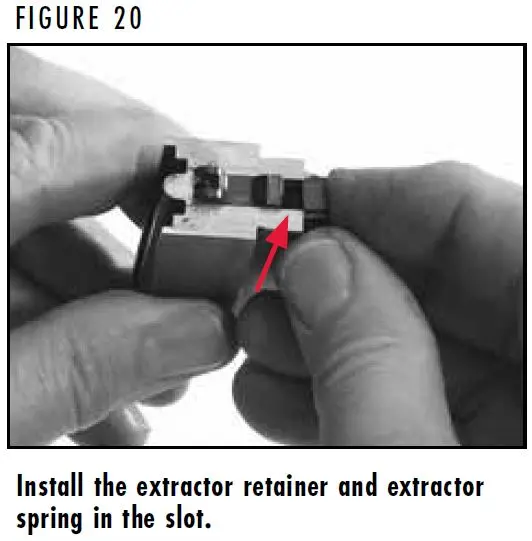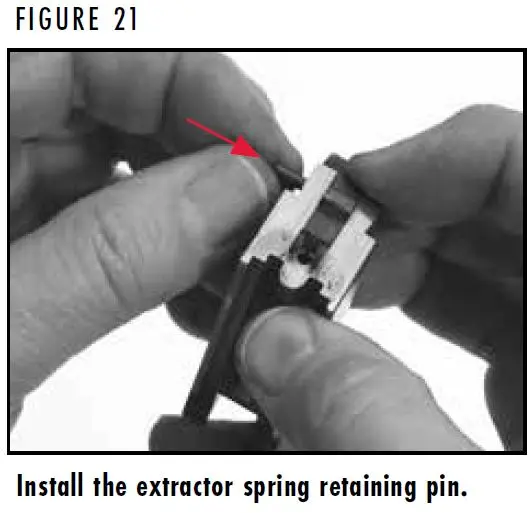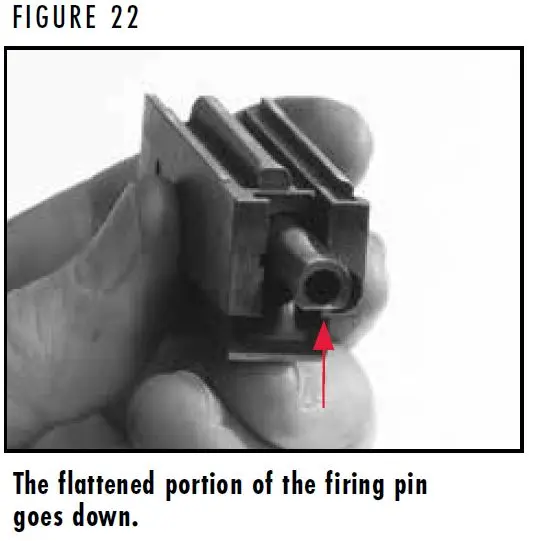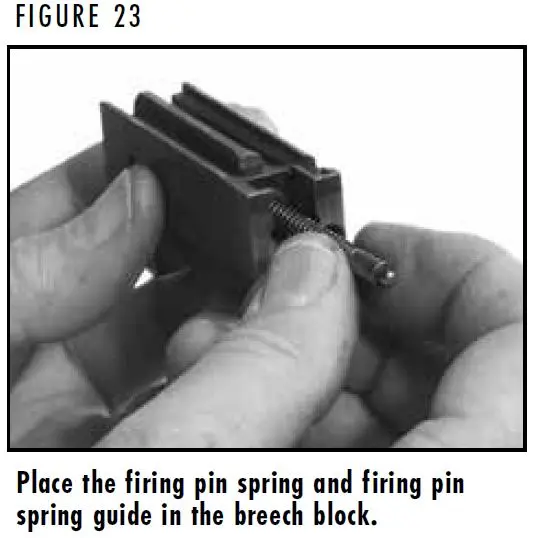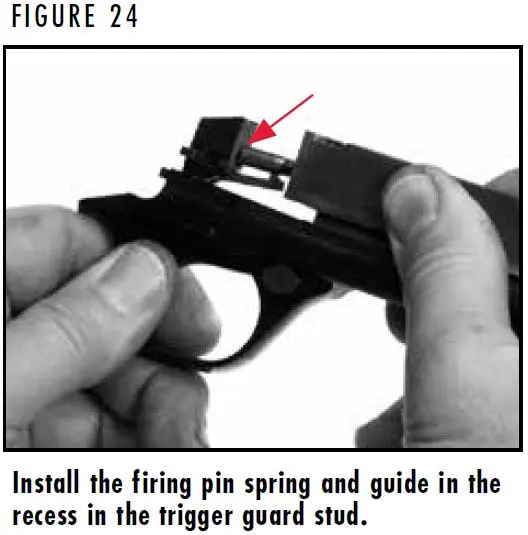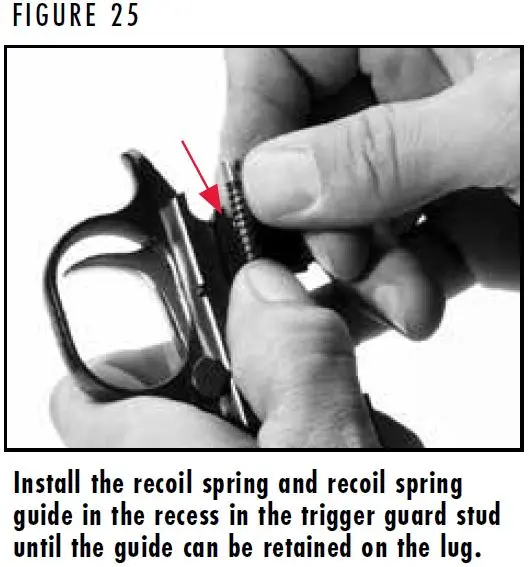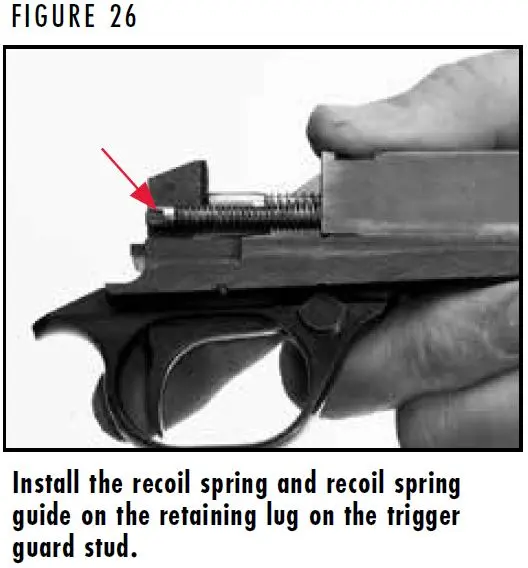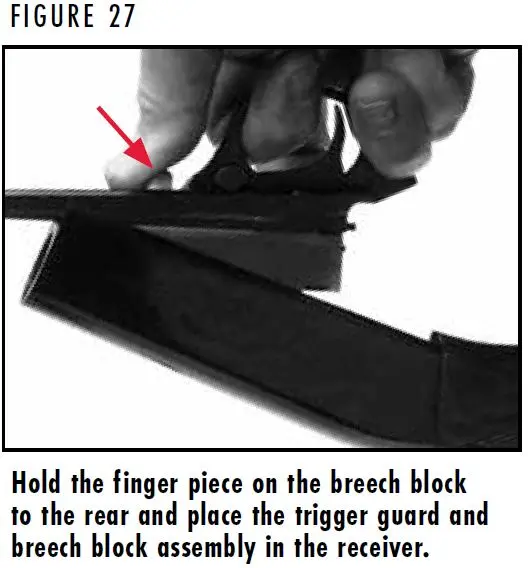Browning SA-22 Owner's Manual
Browning SA-22 Owner's Manual
Important operating instructions for: Browning SA-22 Rifle.
If you have any questions about your new firearm, this owner’s manual or other Browning products, contact:
Browning Consumer Information
One Browning Place
Morgan, UT 84050-9326
Phone: (800) 333-3288
browning.com
Please use the space below to record information about your new firearm.
Model __________________________________________________
Serial Number ____________________________________________
Purchased From __________________________________________
Date of Purchase __________________________________________
THANK YOU FOR CHOOSING BROWNING.
The SA-22 is an authentic Browning, designed by the master gunmaker John Moses Browning himself, and certainly a rifle you will be proud to own. It was revolutionary in its day, and remains the standard by which other .22 caliber autoloaders are judged. It has an unequaled reputation for dependability and handling, and follows the Browning tradition of superb craftsmanship, handsome styling and proven dependability.
With a reasonable amount of care, your SA-22 rifle is designed to give you many years of dependable, enjoyable service.
Specifications within this owner’s manual are correct at the time of printing and subject to change without notice.
WARNING: YOU ARE RESPONSIBLE FOR FIREARMS SAFETY
FAILURE TO FOLLOW ANY OF THE FOLLOWING WARNINGS COULD RESULT IN SERIOUS INJURY OR DEATH.
As a gun owner, you accept a set of demanding responsibilities. How seriously you take these responsibilities can be the difference between life and death.
There is no excuse for careless or abusive handling of any firearm. At all times handle this firearm and all other firearms with intense respect for their power and potential danger.
Please read and understand all of the cautions, warnings, notices, proper handling procedures and instructions outlined in this owner’s manual before using your new firearm.
1 - ALWAYS KEEP THE MUZZLE OF YOUR FIREARM POINTED IN A SAFE DIRECTION EVEN THOUGH YOU ARE CERTAIN IT IS UNLOADED. Never point any firearm at anything you do not intend to shoot. Be extremely alert and aware of all persons and property within the range of your ammunition.
2 - NEVER RELY TOTALLY ON YOUR FIREARM'S MECHANICAL “SAFETY” DEVICE. LIKE ANY MECHANICAL DEVICE, A "SAFETY" CAN SOMETIMES FAIL; IT CAN BE JARRED OR INADVERTENTLY MANIPULATED INTO AN UNSAFE CONDITION. The word, “safety,” describes a firearm’s trigger block mechanism, sear block mechanism, hammer block mechanism, or firing pin block mechanism. Mechanical “safeties” are designed to place your firearm in a safer status, and no guarantee can be made that the firearm will not fire even if the “safety” is in the on safe position. Mechanical “safeties” merely aid safe gun handling and are no excuse for pointing your firearm’s muzzle in an unsafe direction. See “Operation of the Safety” section below for instructions on the operation of this firearm’s “safety.”
Remember, safe gun handling does not stop with your firearm’s mechanical “safety” devices, it starts there. Always treat this firearm with the respect that you would a loaded, ready-to-fire firearm.
Some firearms do not have a mechanical safety. Many target firearms, lever-action firearms, and pistols do not have manual “safety” mechanisms. Therefore it is critical to read and understand the owner’s manual for every firearm which explains the safe operation of the firearm.
While it is a good idea to “test” your firearm’s mechanical “safety” periodically for proper function, never test the “safety” while your firearm is loaded or pointed in an unsafe direction.
3 - WHENEVER YOU HANDLE ANY FIREARM, OR HAND IT TO SOMEONE, ALWAYS OPEN THE ACTION IMMEDIATELY AND VISUALLY CHECK THE FIREARM'S CHAMBER TO MAKE CERTAIN THAT THE FIREARM IS COMPLETELY UNLOADED. Make certain the firearm does not inadvertently contain any ammunition. Remember, merely removing the magazine does not mean the chamber is unloaded. Always keep the chamber empty and the “safety” in the on safe position unless shooting is imminent.
4 - ALWAYS WEAR EAR AND EYE PROTECTION WHEN SHOOTING. Unprotected, repeated exposure to gunfire can cause hearing damage. Wear hearing protection (shooting ear plugs or muffs) to guard against such damage.
Wear shooting glasses to protect your eyes from flying particles. Allow proper distance (eye relief) between a scope and your eye when firing a scoped pistol, rifle or shotgun. Do not use unorthodox shooting methods that could cause the rearward travel of the slide or bolt of a firearm to contact your eyes, face or hands. Always keep a safe distance between the muzzle of your firearm and any persons nearby, as muzzle blast, debris and ejecting cartridges could inflict serious injury.
Always wear eye protection when disassembling and cleaning any firearm to prevent the possibility of springs, spring-tensioned parts, solvents or other agents from contacting your eyes.
5 - KEEP ALL FIREARMS UNLOADED DURING TRANSPORT, EVEN WHEN STORED IN A HOLSTER, GUN CASE, SCABBARD, OR OTHER CONTAINER.
6 - DROPPING OR JARRING A LOADED FIREARM CAN CAUSE ACCIDENTAL DISCHARGE. This can occur even with the “safety” in the on safe position. Be extremely careful while hunting or during any shooting activity to avoid dropping any firearm.
7 - HUNTING FROM ELEVATED SURFACES SUCH AS TREESTANDS IS DANGEROUS. Doing so may increase the risk of mishandling a firearm. The following rules should always be observed by you and those you hunt with: Always make certain that the stand being used is safe and stable. Always make certain that your firearm is unloaded when it is being taken up and down from the stand. Always make certain that your firearm is not dropped from the stand, or dropped while it is being taken up or down from the stand. Remember, a loaded firearm may discharge when dropped, even with the “safety” in the on safe position.
8 - STORE YOUR FIREARM AND AMMUNITION SEPARATELY, WELL BEYOND THE REACH OF CHILDREN. Take prudent safeguards to ensure your firearm does not become available to untrained, inexperienced or unwelcome hands. Store all firearms in secure, locked cases or a gun safe. Keep your firearm unloaded when not in use.
9 - BEWARE BARREL OBSTRUCTIONS. Mud, snow and an infinite variety of other objects may inadvertently lodge in a barrel bore. It only takes a small obstruction to cause dangerously increased pressures that can damage your firearm and cause serious injury to yourself and others..
BEFORE CHECKING FOR A BARREL OBSTRUCTION, BE CERTAIN YOUR FIREARM IS COMPLETELY UNLOADED, THERE IS NOT A LIVE CARTRIDGE IN THE CHAMBER AND THE “SAFETY” IS IN THE ON SAFE POSITION.
After assuring yourself that the firearm is completely unloaded, open the breech or action and look through the barrel to be sure it is clear of obstructions. If an obstruction is seen, no matter how small it may be, clean the bore with a cleaning rod and patch as described in the Cleaning and Maintenance section of this owner’s manual.
10 - BE ALERT TO THE SIGNS OF AMMUNITION MALFUNCTION. IF YOU DETECT AN OFF SOUND OR LIGHT RECOIL WHEN A CARTRIDGE IS FIRED, DO NOT LOAD ANOTHER CARTRIDGE INTO THE CHAMBER.
If your firearm fails to fire, keep the muzzle pointed in a safe direction for a minimum of 30 seconds. Rotate the ejection area of the firearm away from you, carefully open the action and remove the cartridge from the chamber. If the primer is indented, the defective cartridge should be disposed of in a way that cannot cause harm. If the primer is not indented, your firearm should be examined by a qualified gunsmith and the cause of the malfunction corrected before further use. Glance down the barrel to make sure that no obstructions remain in the barrel. Completely clear the barrel before loading and firing again. Failure to follow these instructions can cause extensive damage to your firearm and possible serious injury to yourself and others.
11 - NEVER INSERT A CARTRIDGE OF THE INCORRECT CALIBER INTO ANY FIREARM. The caliber of your firearm is marked on the barrel. Store all cartridges of different calibers in completely separate and well-marked containers. Never store cartridges of mixed calibers in a common container or in your pockets. See the ammunition section below for more information on the correct ammunition for your firearm.
12 - EXAMINE EVERY CARTRIDGE YOU PUT IN YOUR FIREARM.
We cannot assume any responsibility for the use of unsafe or improper firearm and ammunition combinations or damage or injury caused by damaged ammunition. It is your responsibility to read and heed all warnings in this owner’s manual and on ammunition boxes. See the ammunition section below for more information on the correct ammunition for your firearm.
13 - USE ONLY SAAMI APPROVED AMMUNITION.
The barrel and action of this firearm have been made with substantial safety margins beyond the pressures developed by established American commercial loads. Nevertheless, we can assume no liability for incidents that occur through the use of cartridges of nonstandard dimensions or which develop pressures in excess of commercially available ammunition which have been loaded in accordance with standards established by the Sporting Arms and Ammunition Manufacturers’ Institute (SAAMI).
14 - DISCHARGING FIREARMS IN POORLY VENTILATED AREAS, CLEANING FIREARMS OR HANDLING AMMUNITION MAY RESULT IN EXPOSURE TO LEAD AND OTHER SUBSTANCES KNOWN TO CAUSE BIRTH DEFECTS, REPRODUCTIVE HARM AND OTHER SERIOUS PHYSICAL INJURY. HAVE ADEQUATE VENTILATION AT ALL TIMES. WASH HANDS THOROUGHLY AFTER EXPOSURE.
15 - DO NOT SNAP THE FIRING PIN ON AN EMPTY CHAMBER, THE CHAMBER MAY NOT BE EMPTY!
Treat every firearm with the respect due a loaded firearm, even though you are certain the firearm is unloaded.
16 - KEEP YOUR FINGERS AWAY FROM THE TRIGGER WHILE LOADING AND UNLOADING UNTIL SHOOTING IS IMMINENT.
17 - BE SURE OF YOUR TARGET AND BACKSTOP, PARTICULARLY DURING LOW LIGHT PERIODS. Know the range of your ammunition. Never shoot at water or hard objects.
18 - ALWAYS UNLOAD YOUR FIREARM'S CHAMBER BEFORE CROSSING A FENCE, CLIMBING A TREE, JUMPING A DITCH OR NEGOTIATING OTHER OBSTACLES. Never place your firearm on or against a fence, tree, car, or other similar object.
19 - BE DEFENSIVE AND ON GUARD AGAINST UNSAFE GUN HANDLING AROUND YOU AND OTHERS. Don’t be timid when it comes to firearm safety. If you observe other shooters violating any of these safety precautions, politely suggest safer handling practices.
20 - BE CERTAIN YOUR FIREARM IS UNLOADED BEFORE CLEANING. Special and extreme care should be taken to be sure your firearm is unloaded before disassembly, cleaning and reassembly. Keep ammunition away from the cleaning location. Never test the mechanical function of any firearm with live ammunition.
21 - TEACH AND SUPERVISE FIREARMS SAFETY TO ALL MEMBERS OF YOUR FAMILY, ESPECIALLY TO CHILDREN AND NON-SHOOTERS. Closely supervise newcomers to the shooting sports. Encourage enrollment in hunting and shooting safety courses.
22 - NEVER DRINK ALCOHOLIC BEVERAGES OR TAKE ANY TYPE OF DRUGS BEFORE OR DURING SHOOTING. Your vision, motor skills, and judgment could be dangerously impaired, making your gun handling unsafe to you and to others.
23 - READ AND HEED ALL WARNINGS IN THIS OWNER'S MANUAL, ON AMMUNITION BOXES, AND WITH ALL ACCESSORIES THAT YOU INSTALL ON YOUR FIREARM. It is your responsibility to secure the most up-to-date information on the safe handling procedures of your Browning firearm. We assume no liability for incidents that occur when unsafe or improper firearm accessories or ammunition combinations are used.
24 - PRACTICE PERIODIC MAINTENANCE, AVOID UNAUTHORIZED SERVICING. Your firearm is a mechanical device that will not last forever, and as such, is subject to wear and requires periodic inspection, adjustment and service. Browning firearms should be serviced by a Browning Recommended Service Center or by our Service Facility in Arnold, Missouri. We cannot assume any responsibility for injuries suffered or caused by unauthorized servicing, alterations or modifications of Browning firearms.
25 - DO NOT, UNDER ANY CIRCUMSTANCES, ALTER THE TRIGGER, "SAFETY" OR OTHER PARTS OF THE FIRING MECHANISM OF THIS OR ANY OTHER FIREARM EXCEPT AS OTHERWISE DESCRIBED IN THIS MANUAL.
WE RESERVE THE RIGHT TO REFUSE SERVICE ON FIREARMS THAT HAVE BEEN ALTERED, ADDED TO OR SUBSTANTIALLY CHANGED. Removal of metal from the barrel, or modifications of the firing mechanism and/or operating parts, may lead to a refusal of service on such firearms. You will be charged for parts and labor to return the firearm to original specifications prior to servicing your firearm.
With respect to AFTERMARKET PARTS OR COMPONENTS (including, for example, aftermarket trigger systems, barrels, muzzle brakes, suppressors, magazines, etc.), USE AT YOUR OWN RISK. Browning firearms are designed and engineered to meet stringent safety standards. Browning is not responsible for personal injuries or property damage caused by alterations to a firearm. This includes the incorporation of aftermarket parts or components that may or may not satisfy Sporting Arms and Ammunition Manufacturers’ Institute (SAAMI) standards (for example, an aftermarket trigger system may not satisfy SAAMI minimum trigger pull standards, etc.) or may create other dangerous conditions. These conditions may or may not be apparent to the user (for example, installing an aftermarket barrel may have the effect of altering critical firearm dimensions, including headspace, and may create an unsafe firing condition, etc.). Aftermarket parts or components that do not satisfy SAAMI standards, or that could create other dangerous conditions, should not be used.
FAILURE TO FOLLOW THIS WARNING COULD RESULT IN SERIOUS INJURY OR DEATH, AS WELL AS CAUSE DAMAGE TO YOUR FIREARM.
BE CAREFUL!
BE CAREFUL!
GENERAL DESCRIPTION AND OPERATION
The Browning SA-22 rifle is an autoloading rimfire rifle with a blow-back type action. It is capable of firing a single cartridge fed from the magazine each time the trigger is pulled. When the trigger is pulled, the chambered cartridge is fired. Recoil from the fired cartridge moves the bolt rearward, ejecting the fired case and picking up a loaded cartridge from the magazine and chambering it. The rifle is then ready to fire the cartridge with a pull of the trigger. This sequence of operation will occur with each pull of the trigger until both the magazine and chamber are empty.
NOTICE: DO NOT DRY FIRE THE SA-22. DRY FIRING MAY DAMAGE THE FIREARM COMPONENTS, POSSIBLY RENDERING THE FIREARM INOPERABLE.
NOMENCLATURE
In conventional firearm terminology the position and movement of firearm parts are described as they occur with the firearm horizontal and in the normal firing position: i.e., the muzzle is forward or in front; the buttstock is rearward or to the rear; the trigger is downward or underneath; the sights are upward or on top. For general parts nomenclature, refer to Figure 1. For specific parts names related to disassembly, refer to Figure 2.
SERIAL NUMBER
The serial number of your SA-22 rifle is found on the lower rear of the right side of the receiver. Record this number at the front of this owner’s manual for future reference.
INITIAL CLEANING
Various exposed metal parts of your new firearm have been coated at the factory with a rust preventative compound. Before assembling and firing your rifle, clean the anti-rust compound from the inside of the barrel, receiver and action / chamber areas. It is not necessary to disassemble your rifle to perform these operations. A high-quality lightweight gun oil is ideal for removing this compound, and for giving your new firearm its first lubrication. Clean the barrel using a cleaning rod and patch as explained under the “Cleaning and Maintenance Suggestions” section.
WARNING: ALWAYS KEEP THE “SAFETY” IN THE ON SAFE POSITION UNLESS SHOOTING IS IMMINENT. ALWAYS KEEP THE MUZZLE POINTED IN A SAFE DIRECTION. FAILURE TO FOLLOW THESE WARNINGS COULD RESULT IN SERIOUS INJURY OR DEATH.
Operation of the "Safety"
Operation of the "Safety"
The crossbolt “safety” is designed to prevent the trigger from being pulled when in the on safe position. The “safety” is conveniently located in the forward part of the trigger guard. In the off safe position, a red warning dot is visible on the safety button on the left side of the trigger guard.
To place the firearm on safe, press the “safety” button to the right (Figure 3). To move the “safety” to the off safe or fire position, press the safety button to the left. This exposes the red warning dot on the “safety” button (Figure 4).
WARNING: DO NOT DEPEND ON THE RED COLOR ALONE TO INDICATE YOUR FIREARM’S SAFETY STATUS. TIME, EXPOSURE TO THE ELEMENTS, AND THE ABRASIVE ACTION OF CLEANING AGENTS CAN ERASE IT. FAILURE TO FOLLOW THIS WARNING COULD RESULT IN SERIOUS INJURY OR DEATH.
WARNING: ALWAYS KEEP THE MUZZLE POINTED IN A SAFE DIRECTION. BEFORE STARTING ASSEMBLY PROCEDURES, VISUALLY INSPECT THE CHAMBER TO BE ABSOLUTELY CERTAIN THE FIREARM IS COMPLETELY UNLOADED. PLACE THE “SAFETY” IN THE ON SAFE POSITION. FAILURE TO FOLLOW THIS WARNING COULD RESULT IN SERIOUS INJURY OR DEATH.
Assembly
Assembly
The SA-22 is delivered in the box, taken-down, with the barrel removed from the receiver. To assemble the rifle, perform the following operation.
- Make sure the chamber and magazine are empty.
- Place the “safety” in the on safe position.
- Place the barrel lock in the forward position.
- Hold the forearm with the sights upward in one hand. Hold the receiver with the other hand, while at the same time retracting the breech block about ½" (Figure 5).
- Insert the barrel into the receiver as far as it will go. Be sure to hold the receiver when turning the barrel to connect it to the receiver. NOTICE: DO NOT HOLD THE RIFLE BY THE STOCK DURING THIS PROCEDURE. YOU MAY DAMAGE THE STOCK.
- Turn the receiver clockwise ¼ turn until it stops in proper alignment with the receiver/stock: Sights on top and forearm down.
- Release the breech block.
- Lock the barrel into position by sliding the barrel lock rearward (Figure 6).
- If you detect looseness between the halves of the rifle, this can be adjusted by following the instructions under the “Adjusting Barrel Fit” section.
Disassembly
Disassembly
Removing the barrel from the receiver is necessary for cleaning, and is also a safe, convenient way to store your rifle.
- Holding the rifle upside down, push the barrel lock forward.
- While holding the receiver, draw and hold the breech block back ½" or more using the finger piece (Figure 7).
- Rotate the barrel a quarter turn counterclockwise and separate the two pieces (Figure 8).
WARNING: WHEN ADJUSTING THE BARREL FIT OF YOUR RIFLE ALWAYS KEEP THE MUZZLE POINTED IN A SAFE DIRECTION, ALWAYS PLACE THE “SAFETY” IN THE ON SAFE POSITION AND KEEP YOUR FINGERS AWAY FROM THE TRIGGER. FAILURE TO FOLLOW THESE WARNINGS COULD RESULT IN SERIOUS INJURY OR DEATH.
Adjusting Barrel Fit
Adjusting Barrel Fit
If the barrel is loose when mounted to the receiver, an adjustment should be made as correct barrel-to-receiver fit is critical for accuracy. On current SA-22 models, the serrated ring, located just forward of the rear of the barrel, is turned to fine-tune the fit of the barrel half of the rifle to the receiver half as explained below.
- Remove the barrel from the stock/receiver portion of the rifle.
- Hold the barrel with the muzzle pointed away from you and turn the adjusting ring counterclockwise the space of one notch (Figure 9). An audible click will be heard for each notch as the ring is turned.
- Reassemble the rifle and check for fit. If still loose, repeat the process. Should you overtighten the barrel, (indicated by inability to assemble the barrel to the receiver), reverse the operation by turning the adjustment ring in a clockwise direction.
WARNING: DISCHARGING FIREARMS IN POORLY VENTILATED AREAS, CLEANING FIREARMS OR HANDLING AMMUNITION MAY RESULT IN EXPOSURE TO LEAD AND OTHER SUBSTANCES KNOWN TO CAUSE BIRTH DEFECTS, REPRODUCTIVE HARM AND OTHER SERIOUS PHYSICAL INJURY. HAVE ADEQUATE VENTILATION AT ALL TIMES. WASH HANDS THOROUGHLY AFTER EXPOSURE.
DO NOT USE AMMUNITION OTHER THAN WHAT IS INSCRIBED ON THE RIGHT SIDE OF THE BARREL. EXAMINE EVERY CARTRIDGE YOU PUT IN YOUR FIREARM.
FAILURE TO FOLLOW THESE WARNINGS COULD RESULT IN SERIOUS INJURY OR DEATH.
Ammunition
Ammunition
The barrel and action of this firearm have been made with safety margins over the pressures established by the Sporting Arms and Ammunition Manufacturers’ Institute (SAAMI) for Service Cartridges. However, we assume no responsibility for incidents which occur through the use of cartridges of nonstandard dimension or those developing pressures in excess of SAAMI established standards.
The SA-22 must be used only with 22 Long Rifle rimfire ammunition as designated on the barrel.
Magazine Capacity
Magazine Capacity
The magazine is designed to hold eleven 22 Long Rifle cartridges.
WARNING: WHEN LOADING YOUR RIFLE ALWAYS KEEP THE MUZZLE POINTED IN A SAFE DIRECTION, ALWAYS PLACE THE “SAFETY” IN THE ON SAFE POSITION AND KEEP YOUR FINGERS AWAY FROM THE TRIGGER. FAILURE TO FOLLOW THESE WARNINGS COULD RESULT IN SERIOUS INJURY OR DEATH.
DO NOT CARRY YOUR RIFLE WITH A CARTRIDGE IN THE CHAMBER TO AVOID ACCIDENTAL DISCHARGE. WHEN FIRING IS NO LONGER IMMINENT, MAKE SURE THE “SAFETY” IS IN THE ON SAFE POSITION AND UNLOAD THE CHAMBER. FAILURE TO FOLLOW THESE WARNINGS COULD RESULT IN SERIOUS INJURY OR DEATH.
Loading
Loading
LOADING THE MAGAZINE
- Place the “safety” in the on safe position.
- Turn the serrated magazine tab located in the buttplate (Figure 10) a quarter turn and pull the magazine tube assembly straight back until it stops.
- Point the muzzle down and drop the cartridges into the opening in the side of the stock, bullet forward (Figure 11).
- With the magazine loaded, push the magazine tube assembly completely forward into the stock and turn the magazine tab approximately a quarter turn either direction to lock. If the magazine tube does not push in freely, turn it alternately right and left and at the same time push forward. The magazine tube will not lock unless it is pushed completely forward.
LOADING THE CHAMBER
- Place the “safety” in the on safe position.
- Load the magazine as explained previously.
- Draw the breech block completely rearward by pulling on the breech block finger piece.
- Release the finger piece, allowing it to spring forward. This feeds a cartridge from the magazine into the chamber.
WARNING: THE RIFLE IS NOW READY TO FIRE BY SIMPLY MOVING THE “SAFETY” TO THE OFF SAFE POSITION AND PULLING THE TRIGGER.
WARNING: NEVER CHAMBER A CARTRIDGE OR MOVE THE “SAFETY” FROM THE ON SAFE POSITION UNLESS SHOOTING IS IMMINENT. ALWAYS KEEP THE MUZZLE POINTED IN A SAFE DIRECTION. FAILURE TO FOLLOW THESE WARNINGS COULD RESULT IN SERIOUS INJURY OR DEATH.
Firing
Firing
1. Place the “safety” in the on safe position.
2. Load a cartridge into the chamber as explained previously.
WARNING: THE RIFLE IS NOW READY TO FIRE BY SIMPLY MOVING THE “SAFETY” TO THE OFF SAFE POSITION AND PULLING THE TRIGGER.
WARNING: AFTER SHOOTING, DO NOT ASSUME THE RIFLE IS UNLOADED. ALWAYS INSPECT THE CHAMBER, BARREL, FEED MECHANISM AND MAGAZINE TO BE CERTAIN THE RIFLE IS COMPLETELY UNLOADED. FAILURE TO FOLLOW THESE WARNINGS COULD RESULT IN SERIOUS INJURY OR DEATH.
WARNING: WHEN UNLOADING YOUR RIFLE ALWAYS PLACE THE “SAFETY” IN THE ON SAFE POSITION. KEEP THE MUZZLE POINTED IN A SAFE DIRECTION AND YOUR FINGERS AWAY FROM THE TRIGGER. FAILURE TO FOLLOW THESE WARNINGS COULD RESULT IN SERIOUS INJURY OR DEATH.
ALWAYS INSPECT THE CHAMBER, BARREL AND MAGAZINE CAREFULLY AFTER UNLOADING TO BE SURE ALL LIVE CARTRIDGES ARE CLEARED FROM THE FIREARM.
Unloading
Unloading
- Place the “safety” in the on safe position.
- Hold the rifle in the horizontal position, with the muzzle pointed in a safe direction.
- Unload the rifle by pulling the breech block fully to the rear and easing it forward repeatedly with your hand until all cartridges in the magazine and chamber have ejected into your hand (Figure 12). Always fully cycle the breech block in this manner several times after the last cartridge has been ejected to make sure no cartridge is left in the chamber.
- Open the breech block and visually inspect the chamber, receiver cavity and magazine feed mechanism to be sure no cartridges remain.
UNLOADING THROUGH THE MAGAZINE
- With the barrel pointed slightly downward, pull the magazine tube rearward as explained in the “Loading” section.
- With the magazine extended from the buttplate, grasp the serrated magazine tab in one hand and turn the magazine assembly about a quarter turn and pull the magazine tube rearward. The magazine assembly will come free and can be fully removed out of the buttplate.
- Hold the rifle butt down and dump the cartridges into your free hand through the hole in the buttplate.
- Replace the magazine tube assembly and lock it in position.
- Always fully cycle the breech block several times after the last cartridge has been ejected to make sure no cartridge is left in the chamber.
- Open the breech block and visually inspect the chamber, receiver cavity and magazine feed mechanism to be sure no cartridges remain.
Dry Firing
Dry Firing
WARNING: BEFORE ADJUSTING THE SIGHTS, PLACE THE “SAFETY” IN THE ON SAFE POSITION. OPEN THE ACTION AND MAKE CERTAIN YOUR RIFLE IS COMPLETELY UNLOADED. KEEP THE MUZZLE POINTED IN A SAFE DIRECTION. FAILURE TO FOLLOW THESE WARNINGS COULD RESULT IN SERIOUS INJURY OR DEATH.
Sight Adjustment
Sight Adjustment
The proper procedure to check the sights on your rifle is to shoot a group with the sights set as they come from the factory and then make incremental adjustments to move the rear sight blade and blade holder to position the group on your target. All sight adjustments are a matter of trial and error. Remember, it might be necessary to adjust your sights when you change type or even brand of ammunition. Care should be taken not to mar the finish or bend sight components when adjustments are made.
UP OR DOWN ELEVATION ADJUSTMENTS
Adjusting your rifle to shoot higher requires you to raise the rear notch on your rifle’s rear sight elevation adjustment.
- Loosen the two screws on the elevation adjustment and then move the rear sight blade (the part with the rear notch) upward.
- Use your fingers to slide the rear sight blade up or down. Marked index lines give you a reference as you adjust the sight. Adjusting the sight to make your rifle shoot lower is the opposite — move the rear sight blade down. Remember:
- Move the rear sight blade up to shoot higher on the target.
- Move the rear sight blade down to shoot lower on the target.
- Tighten the screws to secure the sight blade.
RIGHT OR LEFT WINDAGE ADJUSTMENTS
The rear sight base is dovetailed in the rear of the barrel. To adjust for windage, perform the following operation.
- Place the rifle on a padded bench or secure it in a gun vise.
- Using a hammer and a wood or fiber dowel that will not mar the sight, gently tap the sight base at the dovetail to the right or left (Figure 13). Remember:
- Move the rear sight to the right to shoot farther to the right on the target.
- Move the rear sight to the left to shoot farther to the left on the target.
WARNING: BEFORE MOUNTING A SCOPE, SIGHT OR OTHER ACCESSORIES TO YOUR RIFLE, PLACE THE “SAFETY” IN THE ON SAFE POSITION. OPEN THE ACTION AND MAKE CERTAIN YOUR RIFLE IS COMPLETELY UNLOADED. KEEP THE MUZZLE POINTED IN A SAFE DIRECTION. FAILURE TO FOLLOW THESE WARNINGS COULD RESULT IN SERIOUS INJURY OR DEATH.
MOUNTING A SCOPE
MOUNTING A SCOPE
SA-22 rifles are drilled and tapped for mounting a scope. A special mount specifically designed for the SA-22 attaches to the barrel, not the receiver. This type of mounting permits the rifle to be taken down without altering zero and further assures fine accuracy. See your Browning dealer to purchase the scope mount base and rings designed for the SA-22.
NOTICE: ALWAYS USE THE CORRECT BASE FOR THIS RIFLE AND THE APPROPRIATE LENGTH SCREWS OR DAMAGE COULD OCCUR TO THE RIFLE.
- Place your rifle in a gun vise or on a table or other safe/secure location with the top of the receiver upward. Protect the finish with rags or other padding.
- You should have a compatible one-piece style base and screws of the correct length.
- Clean all oil, grease or dirt from the barrel and from the scope base parts.
- Remove the rear sight by placing the rifle on a padded bench or securing it in a gun vise. Use a wood or fiber dowel and a hammer that will not mar the sight and gently tap the sight base at the dovetail from the left side to the right side until the sight is removed from the barrel (Figure 13).
- Remove the filler screws from the top of the barrel using a small, thin-bladed gunsmithing-type screwdriver.
- Position the base on the barrel.
- Insert screws of the appropriate length to ensure proper thread engagement through the base and screw them into the barrel using the correct tool. Be careful to assure that the threads of the screws properly engage in the barrel threads to prevent stripping the barrel threads. Many gunsmiths find it helpful to use a drop of serviceable thread locking compound to assure the screws stay tight.
- Tighten the screws snugly, but do not overtighten.
- Mount your scope rings and scope as outlined in the instructions supplied with your scope rings and/or scope. Always make sure you have the proper eye relief.
WARNING: BEFORE PERFORMING CLEANING PROCEDURES, PLACE THE “SAFETY” IN THE ON SAFE POSITION. OPEN THE ACTION AND MAKE CERTAIN YOUR RIFLE IS COMPLETELY UNLOADED. KEEP THE MUZZLE POINTED IN A SAFE DIRECTION. FAILURE TO FOLLOW THESE WARNINGS COULD RESULT IN SERIOUS INJURY OR DEATH.
WARNING: WEAR EYE PROTECTION WHEN DISASSEMBLING AND CLEANING YOUR RIFLE TO PREVENT THE POSSIBILITY OF SPRINGS, SPRING-TENSIONED PARTS, SOLVENTS OR OTHER AGENTS FROM CONTACTING YOUR EYES, RESULTING IN INJURY.
WARNING: KEEP ALL AMMUNITION AWAY FROM THE CLEANING AREA. NEVER TEST THE MECHANICAL FUNCTION OF YOUR RIFLE WITH LIVE AMMUNITION. FAILURE TO FOLLOW THESE WARNINGS COULD RESULT IN SERIOUS INJURY OR DEATH.
Cleaning and Maintenance Suggestions
Cleaning and Maintenance Suggestions
CLEANING PROCEDURES
Your SA-22 rifle will function better and more reliably over a longer period of time if it is properly maintained and kept clean. Clean your firearm after every day of shooting, and more often if it becomes excessively dirty. A minimum cleaning includes wiping down the firearm and oiling key parts. Regular maintenance will also include cleaning the barrel.
NOTICE: SOME CLEANING SOLVENTS, LUBRICANTS AND OTHER STRONG CHEMICALS SUCH AS THOSE FOUND IN DEET-CONTAINING INSECT REPELLENTS, SUNSCREENS, ETC. MAY DAMAGE THE FINISHES OF YOUR FIREARM. USE CARE TO PREVENT CHEMICALS FROM MAKING CONTACT WITH FINISHES WHEN CLEANING YOUR FIREARM.
If you encounter a function problem be sure to give your firearm a thorough cleaning to see if it solves the problem before seeking the services of a Browning Recommended Service Center or our Service Facility in Arnold, Missouri, or a qualified gunsmith.
- Remove the barrel from the receiver as explained previously.
- Use a cleaning rod with a slotted tip or cleaning jag and a patch large enough for a snug fit in the bore. Insert the rod and patch into the barrel at the action end and run it back and forth several times. Care should be exercised to ensure that the cleaning rod does not strike the crown of the muzzle, as damage to this area can affect the accuracy of your rifle. Browning offers a complete line of products to make cleaning your firearm fast and easy. Be sure to follow all instructions when using any product to clean your firearm.
- Inspect the chamber and bore for powder fouling. A normal amount of powder residue can be expected and is not serious. It can usually be removed with a patch saturated with nitro solvent. If, or when, fouling should become heavy, it can be removed with a brass bore brush. Dip or spray the brush with nitro solvent and scrub the chamber and bore until the fouling is removed. To prevent brass bristles from breaking off, the brush should be pushed completely through the barrel before being withdrawn.
- After all fouling has been removed, the chamber and bore should be wiped dry. When the bore is dry, pass a lightly oiled patch through it for preservation. A fine, light gun oil is recommended.
- Inspect the barrel and chamber to be certain no patches have inadvertently been left in them. Remove any that remain.
- Use a small brush or rag to remove dirt or other foreign matter from inside the receiver and other parts of the action. Lightly lubricate all moving parts with a high-quality, light gun oil. Use oil sparingly, a very light film is sufficient. A fine, light gun oil is ideally suited for this purpose.
- NOTICE: DO NOT POUR LARGE QUANTITIES OF OIL INTO THE RECEIVER OR OTHER PARTS. IT CAN DRAIN DOWN TO THE WOOD AND SOFTEN IT, CAUSING PERMANENT DAMAGE AND LOOSENING OF THE STOCK.
- Wipe all exposed metal surfaces with a lightly oiled cloth making certain that all finger marks are removed. Finger marks provide a place where moisture can accumulate. The metal of the gun should receive a light film of oil any time the rifle has been exposed to weather or handling.
- Wood surfaces can also be wiped with a quality, lightweight gun oil or they can be polished with any quality furniture wax (but not both).
WARNING: BEFORE PERFORMING CLEANING PROCEDURES, PLACE THE “SAFETY” IN THE ON SAFE POSITION. OPEN THE ACTION AND MAKE CERTAIN YOUR RIFLE IS COMPLETELY UNLOADED. KEEP THE MUZZLE POINTED IN A SAFE DIRECTION. FAILURE TO FOLLOW THESE WARNINGS COULD RESULT IN SERIOUS INJURY OR DEATH.
WARNING: WEAR EYE PROTECTION WHEN DISASSEMBLING AND CLEANING YOUR RIFLE TO PREVENT THE POSSIBILITY OF SPRINGS, SPRING-TENSIONED PARTS, SOLVENTS OR OTHER AGENTS FROM CONTACTING YOUR EYES, RESULTING IN INJURY.
REMOVAL AND MAINTENANCE OF THE BREECH BLOCK
Occasionally additional cleaning procedures are required to keep your rifle functioning properly. Disassembly is very easy and may be accomplished as follows without the aid of tools.
1. Make sure your rifle is completely unloaded and the “safety” is in the on safe position.
2. Remove the barrel as explained on Figure 8.
3. Push the trigger guard forward about 1¼" until the rails on the trigger guard clear the grooves in the receiver (Figure 14).
4. While holding the breech block rearward with the thumb, pivot the rear end of the trigger guard upward and away from the receiver (Figure 15). This procedure removes the entire trigger assembly and breech block and is ordinarily sufficient disassembly for normal cleaning.
Be careful not to lose the cartridge stop located in the top of the receiver cavity. It can easily be removed for cleaning by simply lifting it out. Replace with the smaller, rounded pin inserted in the hole toward the front of the receiver, and the larger, squared-off protrusion inserted in the larger round cavity (Figure 16).
5. Additional disassembly of the rifle beyond this point requires some skill, but should the need arise, proceed as follows: With the trigger assembly and breech block in your hand, (removed from the receiver) place the “safety” in the off safe position and release the firing pin by pulling the trigger. Draw the breech block back ¼", then lift up on the forward end until the finger piece clears the trigger guard plate (Figure 17). Allow the breech block to travel forward slowly, holding the recoil spring between your thumb and fingers to prevent it from coming out.
6. Remove the recoil spring, recoil spring guide, firing pin, firing pin spring and the firing pin spring guide from the breech block, and trigger guard housing for cleaning.
7. To remove the extractor, carefully punch out the extractor spring retaining pin, after which the extractor spring retainer, extractor spring and extractor can be removed from the breech block (Figure 18). The extractor spring retainer and spring are under tension, take special care when removing the pin to prevent losing them. Occasionally remove the carbon and residue that forms in the slot underneath the extractor with a quality gun cleaning solvent.
WARNING: WEAR EYE PROTECTION WHEN ASSEMBLING YOUR RIFLE TO PREVENT THE POSSIBILITY OF SPRINGS, SPRING-TENSIONED PARTS, SOLVENTS OR OTHER AGENTS FROM CONTACTING YOUR EYES, RESULTING IN INJURY.
ASSEMBLING AND INSTALLING THE BREECH BLOCK
1. Reinstall the extractor into the slot (Figure 19).
2. Insert the extractor spring into the spring retainer and slide both parts into the slot (Figure 20).
3. While holding the retainer against the spring, install the extractor spring retaining pin (Figure 21).
4. Reinstall the firing pin, firing pin spring and firing pin spring guide in the breech block. The firing pin is inserted pin end first. Line up the firing pin so that the pin portion of the firing pin aligns with the firing pin hole located at the front of the breech block with the flattened edge on the rear of the firing pin facing downward (Figure 22).
5. Reposition the firing pin spring and firing pin spring guide in the breech block (Figure 23).
6. Reinstall the breech block assembly on the rails of the trigger guard by placing the firing pin spring guide into the recess in the trigger guard stud. Tilt the rear of the breech block downward slightly while pushing the breech block rearward until the finger piece on the bottom of the breech block clears the opening in the trigger guard (Figure 24).
7. To replace the recoil spring and recoil spring guide in the breech block, hold the trigger guard and breech block assembly in one hand with the top side up and the rear of the trigger guard away from you, insert the recoil spring, with the recoil guide inserted in the other end, into the recoil spring hole of the breech block.
8. Hold the breech block in one hand. Grasp the recoil spring guide and recoil spring with your free hand and carefully compress the recoil spring into the recoil spring hole in the breech block a little bit at a time. Use the thumb of the hand holding the breech block to help maintain control of the spring (Figure 25) while feeding both the spring and guide into the breech block until the end of the recoil spring guide can be released against its retaining lug on the trigger guard stud (Figure 26). This operation is slightly difficult and requires some practice.
9. Before reinstalling the trigger guard/breech block assemblies in the receiver make sure that the cartridge stop is positioned properly in the top of the receiver cavity. To do this, position the cartridge stop with the smaller, rounded pin inserted in the hole toward the front of the receiver, and the larger, squared-off protrusion inserted in the larger round cavity (Figure 16, page 27).
10. To replace the trigger guard and breech block assembly in the receiver, hold the breech block fully rearward with your thumb and insert the rear of the trigger guard rails into the front of the grooves in the receiver (Figure 27). Press the rear of the trigger guard into position in the receiver and slide rearward into place. Should the trigger guard fail to slip into position easily, draw the breech block rearward and at the same time press down lightly on the trigger guard. Reinstall the barrel to the receiver as explained under the “Assembly” section.
NOTICE: NEVER ATTEMPT TO TAKE YOUR FIREARM APART FURTHER THAN EXPLAINED IN THIS OWNER’S MANUAL. YOUR FIREARM IS A SPECIALIZED, FINELY FITTED MECHANISM. YOU MAY PERMANENTLY DAMAGE IT BY ATTEMPTING TO DISASSEMBLE THE INNER MECHANISM ASSEMBLIES. IF FURTHER DISASSEMBLY FOR SERVICE OR CLEANING IS REQUIRED, TAKE YOUR FIREARM TO A QUALIFIED GUNSMITH, OR CONTACT OUR ARNOLD, MISSOURI SERVICE FACILITY AS EXPLAINED UNDER THE “SERVICE OR REPAIR” SECTION.
Maintenance of Oil Finish Stocks
Maintenance of Oil Finish Stocks
Keeping the oil-finished wood surface on your firearm looking its best requires only a small amount of maintenance. When the surface becomes spotted or dull, the affected area(s) can be cleaned using rubbing alcohol on a soft, lint free cloth and allowed to dry. A small amount of a linseed oil-based finish, such as Watco® Danish Oil Finish, Deft® Danish Oil Finish or Formby’s® Tung Oil Finish should then be applied to the surface of the wood with a soft, lint free cloth according to the manufacturer’s instructions. To treat the checkering, a small amount of oil-based finish can be applied and then distributed evenly using a toothbrush or other soft bristled brush.
Models with Special Finishes
Models with Special Finishes
As with any firearm, the only way to preserve its pristine condition and collector appeal is to never handle or fire it, which in turn would deprive you of much of the enjoyment that comes with owning a fine Browning firearm.
While special finishes such as engraving and gold plating greatly enhance the aesthetic appeal of your rifle, please be aware that they are no more durable, and in some cases may even be slightly less durable than more common firearm finishes.
As you use your rifle, you can expect special finishes to wear in much the same manner as any other firearm finish. These marks are the honest product of the hours spent enjoying your firearm and each scuff and scratch will probably have a good story to go along with it.
SERVICE OR REPAIR
SERVICE OR REPAIR
If your firearm should require service or repairs, we suggest you first contact a local recommended Browning Firearms Service Center.
To locate a service center visit browning.com, contact our Customer Service Department or your Browning firearms dealer for the address of the Service Center nearest you. Otherwise, you may send your firearm directly to our Service Department in Arnold, Missouri.
Parts listings, Firearm Service Center lists, service procedures, service/repair form and general product information are also found on the internet at browning.com. For technical questions about your firearm or service, contact:
United States customers contact:
Browning Firearm Status and
Technical Service
3005 Arnold Tenbrook Rd
Arnold, MO 63010-9406
Phone: (800) 322-4626
Canadian customers contact:
Browning Canada Sports Ltd/Ltée
5583 Chemin St-François
St-Laurent, Quebec H4S 1W6
Phone: (514) 333-7261
When returning your firearm for servicing, you must do the following:
1. Be sure it is completely unloaded.
2. Remove any optics, optic mounts or other accessories.
3. Package it securely in a cardboard container.
4. Enclose the service/repair form available at browning.com or a letter that clearly describes the trouble experienced, the ammunition used and the repairs desired. Also include your name, e-mail address (if possible) and a daytime phone number where you can be reached.
5. Never return ammunition with your firearm. It is against postal and most commerce regulations.
CERTAIN STATES REQUIRE, BY LAW, THAT THEIR OWN SPECIFIED WARNING NOTICES BE INCLUDED BY THE MANUFACTURER, DISTRIBUTOR, OR RETAIL DEALER WITH FIREARMS SOLD IN THAT STATE. BROWNING SELLS ITS PRODUCTS IN COMPLIANCE WITH APPLICABLE LAWS AND REGULATIONS. BECAUSE OUR PRODUCTS MAY BE SOLD IN THESE STATES, WE INCLUDE THE FOLLOWING:
State-By-State Warnings
State-By-State Warnings
CALIFORNIA
Firearms must be handled responsibly and securely stored to prevent access by children and other unauthorized users. California has strict laws pertaining to firearms, and you may be fined or imprisoned if you fail to comply with them. Visit the Website of the California Attorney General at https://oag.ca.gov/firearms for information on firearm laws applicable to you and how you can comply.
Prevent child access by always keeping guns locked away and unloaded when not in use. If you keep a loaded firearm where a child obtains and improperly uses it, you may be fined or sent to prison.
If you or someone you know is contemplating suicide, please call the National Suicide Prevention Lifeline at 1-800-273-TALK (8255).
Las armas de fuego deben de ser manipuladas responsablemente y almacenadas en sitios seguros para prevenir el acceso a ellas por parte de niños y personas sin autorización. California cuenta con leyes estrictas sobre las armas de fuego, y puede ser multado y encarcelado si no las obedece. Visite la página web de California Attorney General, https://oag.ca.gov/firearms para más información sobre cómo cumplir con las leyes de armas de fuego.
Prevenga el acceso de los niños a las armas de fuego manteniéndolas siempre en un lugar seguro, bajo llave y descargadas cuando no estén en uso. Si usted deja un arma cargada al alcance de un niño, y éste la utiliza indebidamente,usted podría ser multado e incluso enviado a la cárcel.
Si usted o alguien que conoce está pensando en suicidarse, llame a la línea Nacional de Prevención del Suicidio al 1-800-273-TALK (8255).
CONNECTICUT
“UNLAWFUL STORAGE OF A LOADED FIREARM MAY RESULT IN IMPRISONMENT OR FINE.”
FLORIDA
“IT IS UNLAWFUL, AND PUNISHABLE BY IMPRISONMENT AND FINE, FOR ANY ADULT TO STORE OR LEAVE A FIREARM IN ANY PLACE WITHIN THE REACH OR EASY ACCESS OF A MINOR UNDER 18 YEARS OF AGE OR TO KNOWINGLY SELL OR OTHERWISE TRANSFER OWNERSHIP OR POSSESSION OF A FIREARM TO A MINOR OR A PERSON OF UNSOUND MIND.”
MAINE
“ENDANGERING THE WELFARE OF A CHILD IS A CRIME. IF YOU LEAVE A FIREARM AND AMMUNITION WITHIN EASY ACCESS OF A CHILD, YOU MAY BE SUBJECT TO FINE, IMPRISONMENT OR BOTH. KEEP FIREARMS AND AMMUNITION SEPARATE. KEEP FIREARMS AND AMMUNITION LOCKED UP. USE TRIGGER LOCKS.”
MARYLAND
“WARNING: Children can operate firearms which may cause death or serious injury. It is a crime to store or leave a loaded firearm in any location where an individual knew or should have known that an unsupervised minor would gain access to the firearm. Store your firearm responsibly!”
MASSACHUSETTS
“WARNING FROM THE MASSACHUSETTS ATTORNEY GENERAL: This handgun is not equipped with a device that fully blocks use by unauthorized users. More than 200,000 firearms like this one are stolen from their owners every year in the United States. In addition, there are more than a thousand suicides each year by younger children and teenagers who get access to firearms. Hundreds more die from accidental discharge. It is likely that many more children sustain serious wounds, or inflict such wounds accidentally on others. In order to limit the chance of such misuse, it is imperative that you keep this weapon locked in a secure place and take other steps necessary to limit the possibility of theft or accident. Failure to take reasonable preventative steps may result in innocent lives being lost, and in some circumstances may result in your liability for these deaths.”
“IT IS UNLAWFUL TO STORE OR KEEP A FIREARM, RIFLE, SHOTGUN OR MACHINE GUN IN ANY PLACE UNLESS THAT WEAPON IS EQUIPPED WITH A TAMPER RESISTANT SAFETY DEVICE OR IS STORED OR KEPT IN A SECURELY LOCKED CONTAINER.”
NEW JERSEY
“IT IS A CRIMINAL OFFENSE TO LEAVE A LOADED FIREARM WITHIN EASY ACCESS OF A MINOR.”
NEW YORK CITY, NEW YORK
“THE USE OF A LOCKING DEVICE OR SAFETY LOCK IS ONLY ONE ASPECT OF RESPONSIBLE WEAPON STORAGE. ALL WEAPONS SHOULD BE STORED UNLOADED AND LOCKED IN A LOCATION THAT IS BOTH SEPARATE FROM THEIR AMMUNITION AND INACCESSIBLE TO CHILDREN AND ANY OTHER UNAUTHORIZED PERSONS. NEW YORK CITY LAW PROHIBITS, WITH CERTAIN EXCEPTIONS, ANY PERSON FROM ACQUIRING MORE THAN ONE FIREARM, OR MORE THAN ONE RIFLE OR SHOTGUN, WITHIN A 90-DAY PERIOD.”
NORTH CAROLINA
“IT IS UNLAWFUL TO STORE OR LEAVE A FIREARM THAT CAN BE DISCHARGED IN A MANNER THAT A REASONABLE PERSON SHOULD KNOW IS ACCESSIBLE TO A MINOR.”
Any person who resides in the same premises as a minor, owns or possesses a firearm, and stores or leaves the firearm (i) in a condition that the firearm can be discharged and (ii) in a manner that the person knew or should have known that an unsupervised minor would be able to gain access to the firearm, is guilty of a Class 1 misdemeanor if a minor gains access to the firearm without the lawful permission of the minor’s parents or a person having charge of the minor and the minor:
- Possesses it in violation of G.S. 14-269.2(b)
- Exhibits it in a public place in a careless, angry, or threatening manner;
- Causes personal injury or death with it not in self defense; or
- Uses it in the commission of a crime.
TEXAS
“IT IS UNLAWFUL TO STORE, TRANSPORT, OR ABANDON AN UNSECURED FIREARM IN A PLACE WHERE CHILDREN ARE LIKELY TO BE AND CAN OBTAIN ACCESS TO THE FIREARM.”
WISCONSIN
“IF YOU LEAVE A LOADED FIREARM WITHIN THE REACH OR EASY ACCESS OF A CHILD YOU MAY BE FINED OR IMPRISONED OR BOTH IF THE CHILD IMPROPERLY DISCHARGES, POSSESSES, OR EXHIBITS THE FIREARM.”
PLEASE CONSULT YOUR LOCAL FEDERALLY LICENSED FIREARMS RETAILER, STATE POLICE, OR LOCAL POLICE FOR ADDITIONAL WARNINGS THAT MAY BE REQUIRED BY LOCAL LAW OR REGULATION. FIREARMS REGULATIONS CHANGE CONSTANTLY AND YOUR LOCAL AUTHORITIES ARE THE BEST SOURCE FOR THE MOST CURRENT INFORMATION ON SUCH LEGAL MATTERS.
BROWNING.COM
US: Morgan, Utah 84050-9326
CANADA: Browning Canada Sports Ltd/Ltée, St-Laurent, Quebec H4S 1W6
INTL: Parc Industriel des Hauts-Sarts, B-4040 Herstal, Belgium
23-BFA-251



